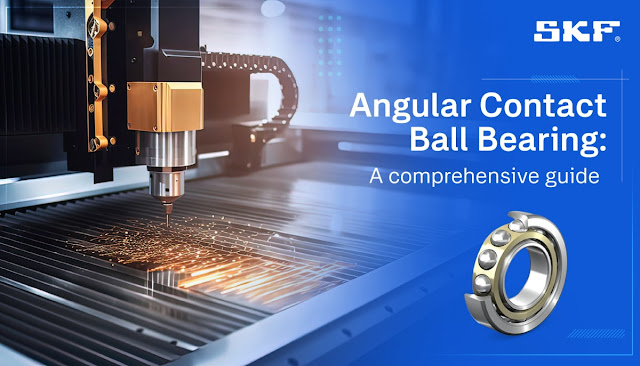Angular Contact Ball Bearing: A Comprehensive Guide
The angular
contact ball bearing is one of the types of ball bearings that plays a
significant role in machinery's functioning. Especially engineered to handle
axial and radial loads and facilitate load capacity, these bearings are pivotal
in smoothing operations and enhancing efficiency. Moreover, these bearings are
a game changer in various industries, including industrial, automotive,
aerospace, etc., in pumps, electric motors, gearboxes, and clutches.
Reading the complete blog will provide a comprehensive guide
about the design and functioning of angular bearings, their use cases, and
benefits, helping you better understand their implementation in business and
operations.
What are Angular Contact Ball Bearings?
Angular rolling bearings are the type of bearing
that has balls and makes contact angles with inner and outer rings. Unlike
standard ball bearings, that angle creates the point of contact between the
race and the ball. They are designed to carry heavy axial and radial loads, and
their load-carrying capacity increases with the contact angle.
Design of Angular Contact Bearings
Being a precision-engineered component, angular bearing
types are designed for primary smooth operations in rotating machinery. They
are manufactured with the ability to withstand the heaviest of loads, balancing
capacities for both axial and radial loads. They boast a design apt to optimize
angular contact between the ball and the raceways in the radial plane. This
strategic creation facilitates the efficient transmission of forces while
distributing loads and enhancing machinery's functioning.
Moreover, this bearing type is meticulously formed to
accommodate high-speed applications, minimizing friction in every rotation.
Catering to varying operational efficiency and performance requirements,
angular contact bearings have precise control over the structure in demanding
operational conditions.
Use Cases of Angular Contact Ball Bearings
Angular contact bearings are part and parcel of any
machinery. A highly functional element, they offer ease and convenience,
catering to diverse industry types. Let’s delve deep into the diverse use cases
offered by angular contact ball
bearings, showcasing versatility across the board.
Machine Tools
The accuracy and stability of cutting, mining, and grinding
operations depend heavily on angular rolling bearings, which enable high speed
and seamless processing.
Gear Boxes
In industrial gearboxes, angular rolling bearings
accommodate misalignment, transmitting power efficiently, making them ideal.
Automotives
These bearings are extensively used in the automotive
industry to gear up the rotations and effortlessly manage loads, contributing
to vehicle safety and performance.
Aerospace
They are also widely used in aircraft engines because of
their immeasurable performance in coping with dynamic environments where safety
is paramount.
Benefits of Angular Contact Ball Bearings
Angular rolling bearings have incredible benefits, from the
ability to carry and handle loads to fortifying the overall outcome. Here are
some of the common benefits:
Increased Durability
The bearings are manufactured to maintain consistency in
distributing the loads evenly, preventing the balls from causing friction. This
results in durability that withstands loads for a longer period of time.
Improved Efficiency
Unlike other bearing types, these bearings are even more
efficient at minimizing friction at every point in time. This reduces time and
saves a lot of energy and cost.
Reduced Friction
Angular contact ball bearings produce less or no friction
because of their design and precision, which have separated the balls from
contact by a cage.
Final Thoughts
SKF produces a range of angular
ball bearings that are a preferred choice for industries in this
fast-paced business landscape. Meticulously crafted, SKF angular contact
bearings ensure optimal performance, outstanding reliability, and an increased
lifespan to assist industries and businesses in achieving their goals.




Comments
Post a Comment